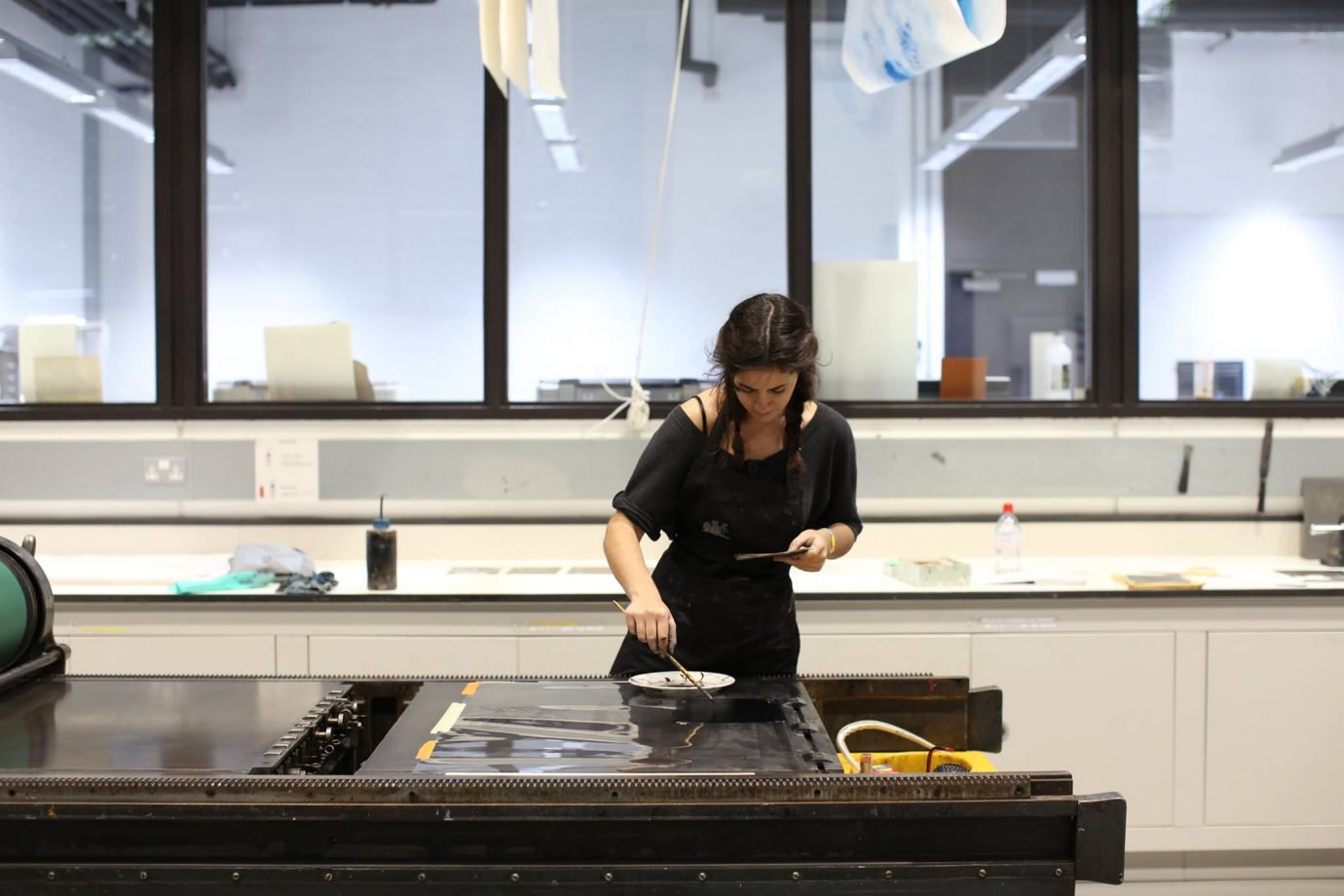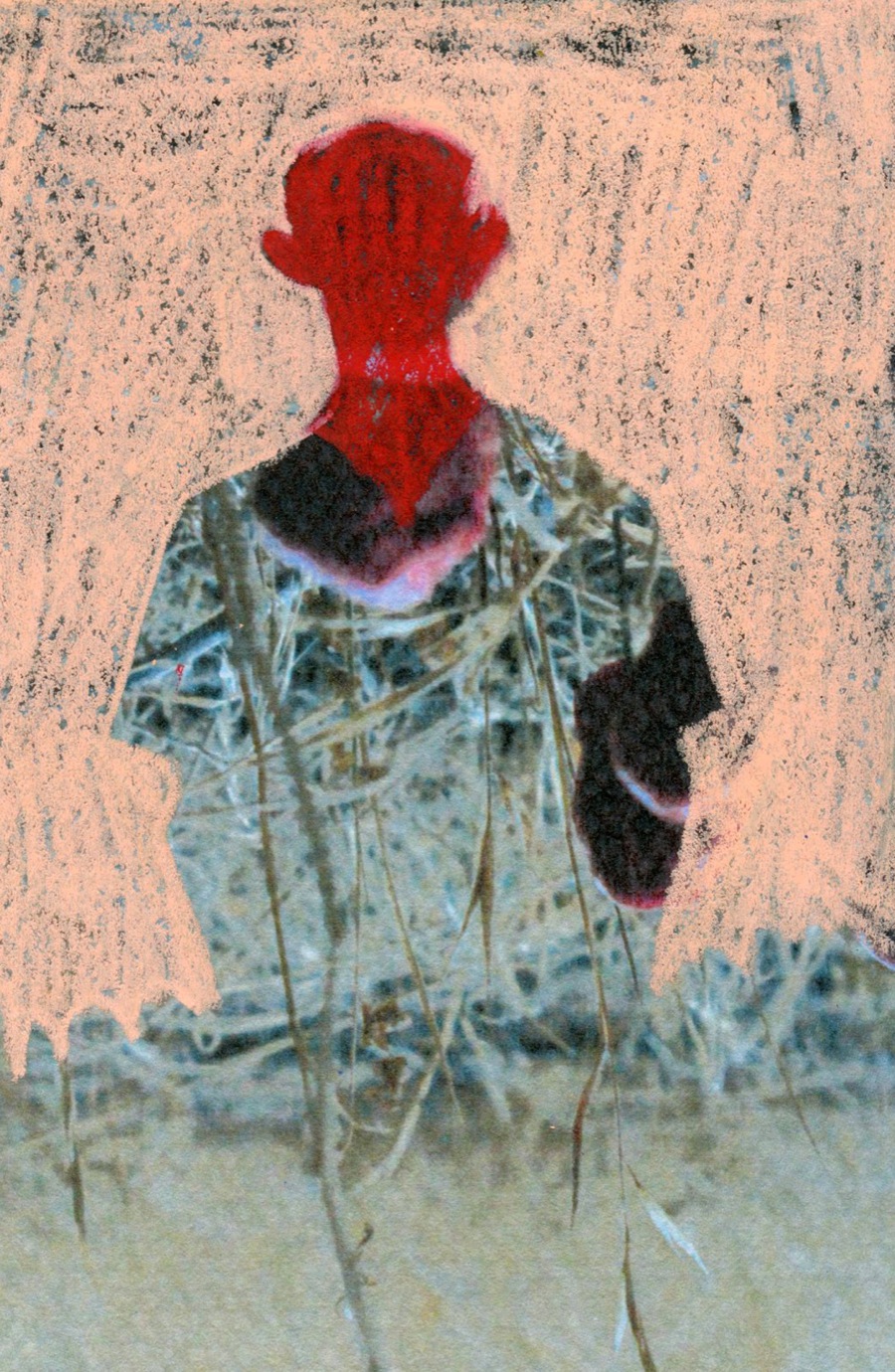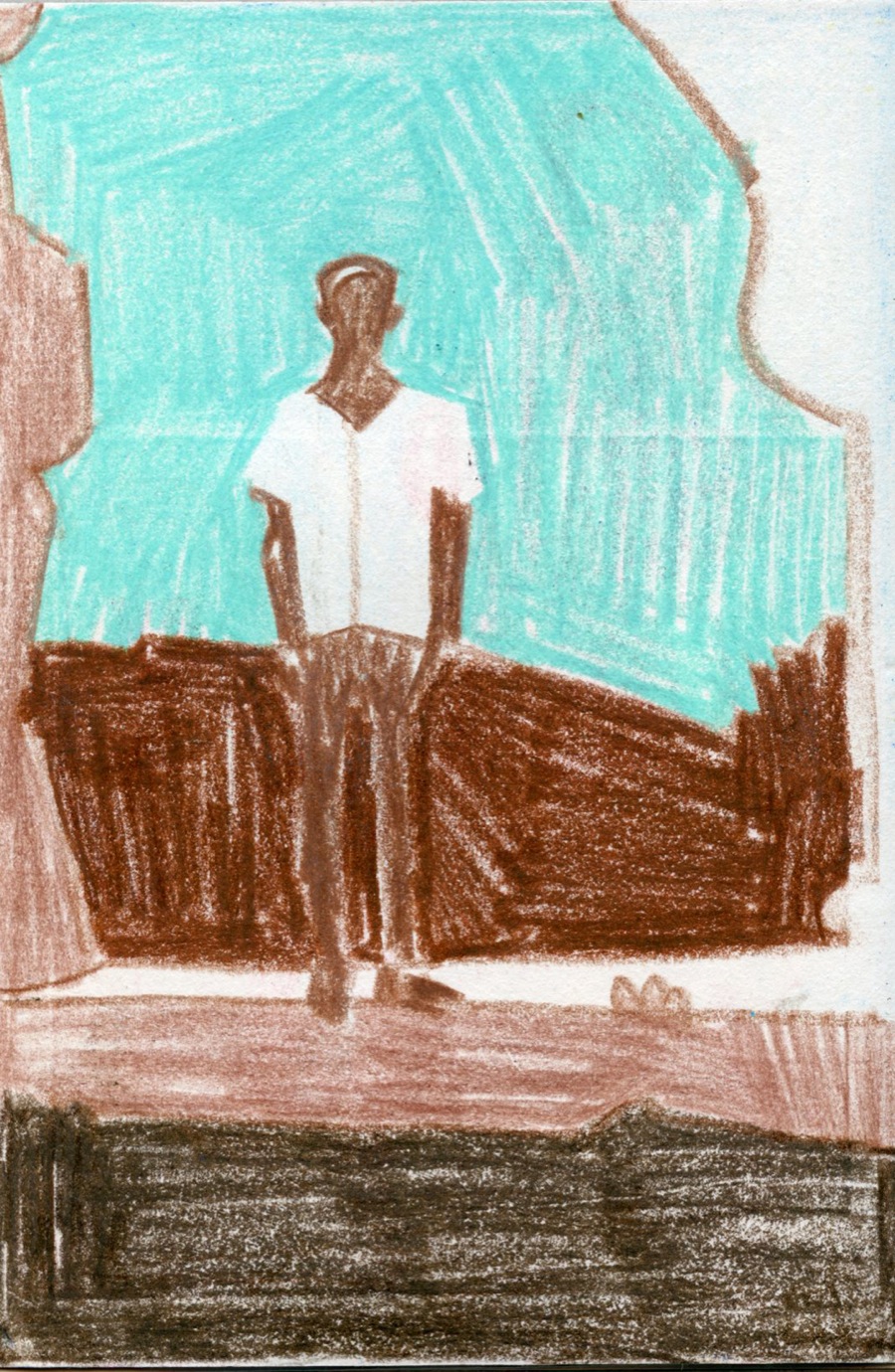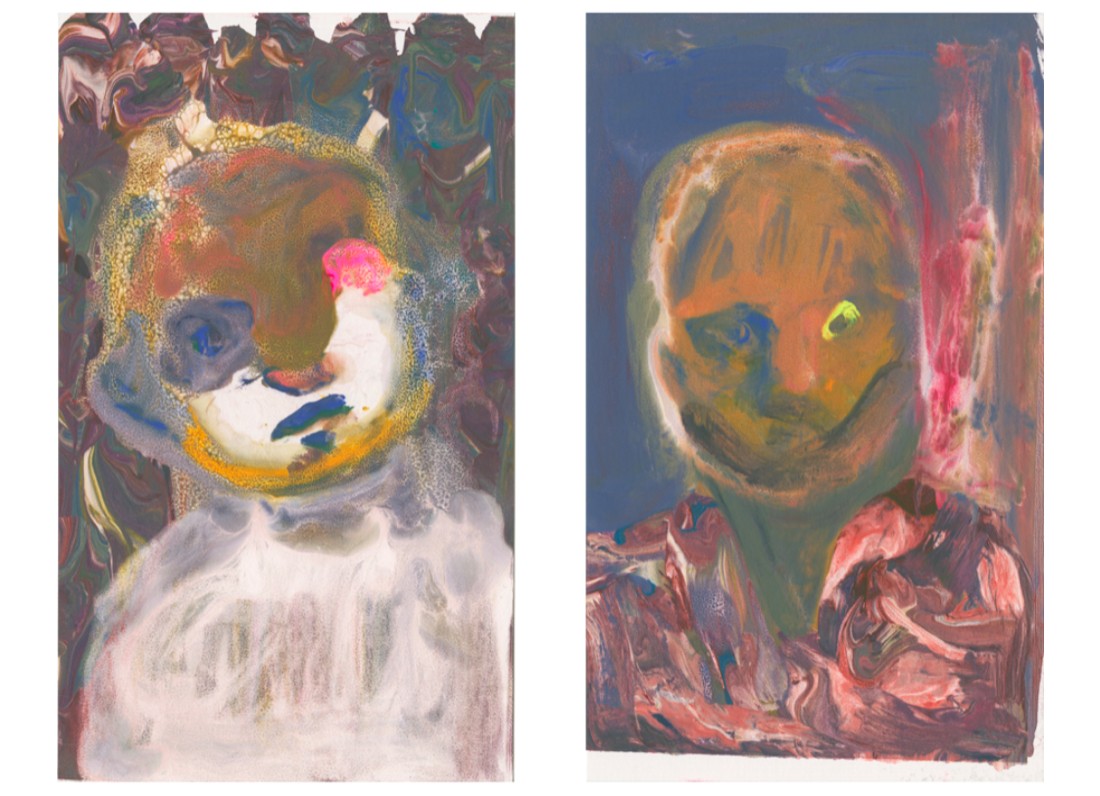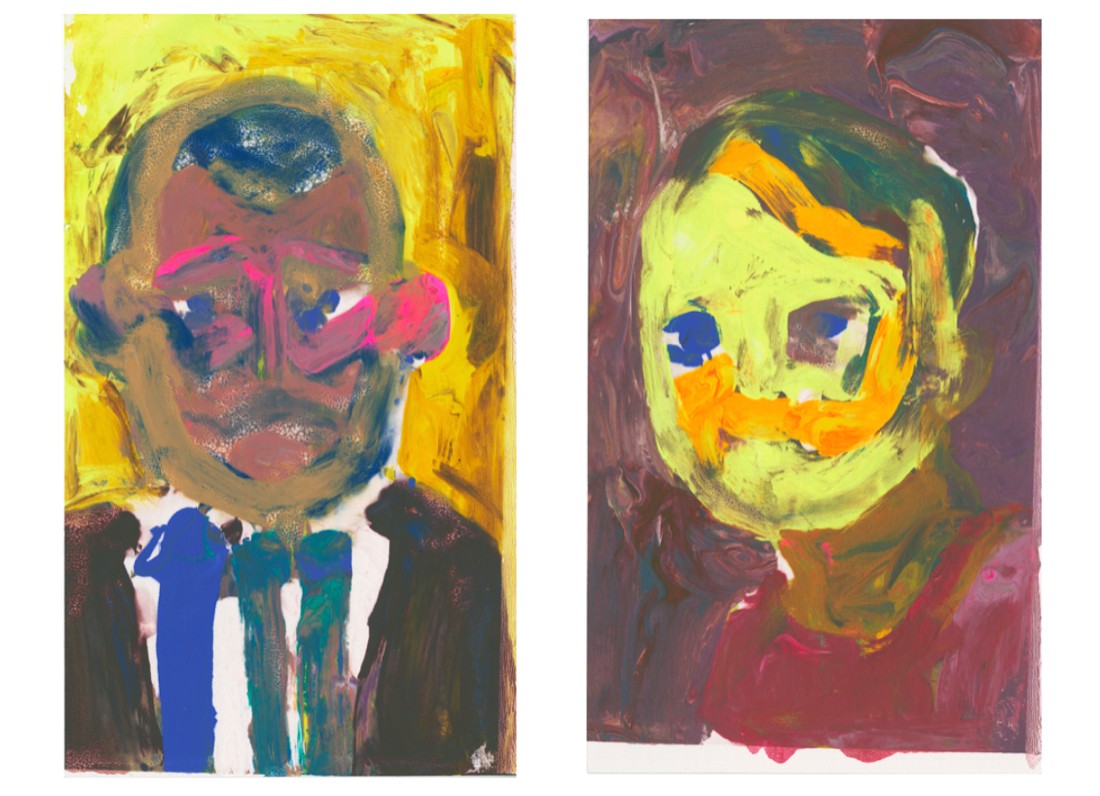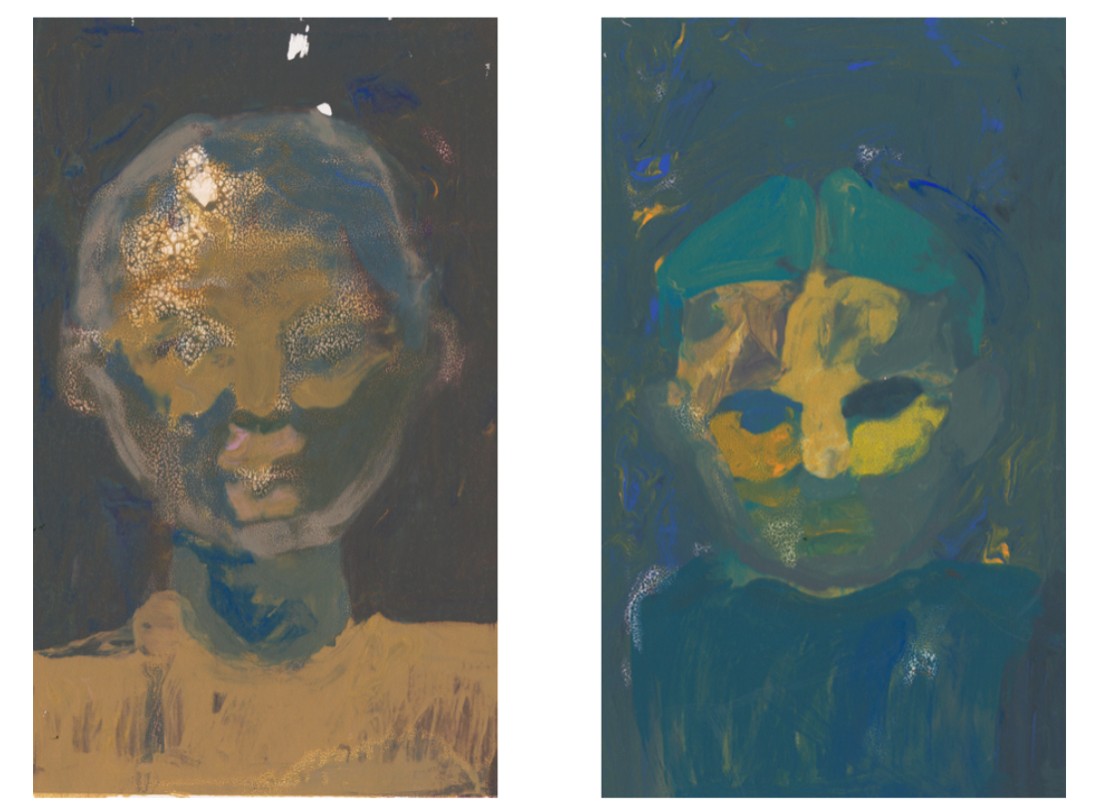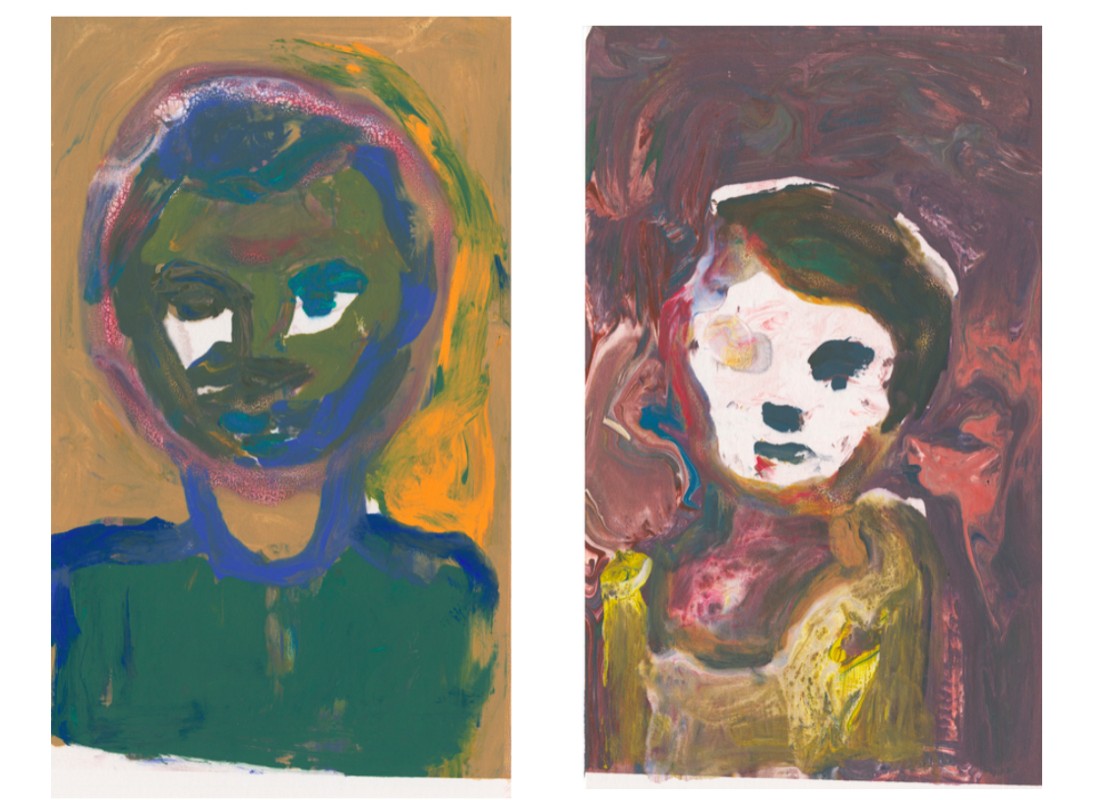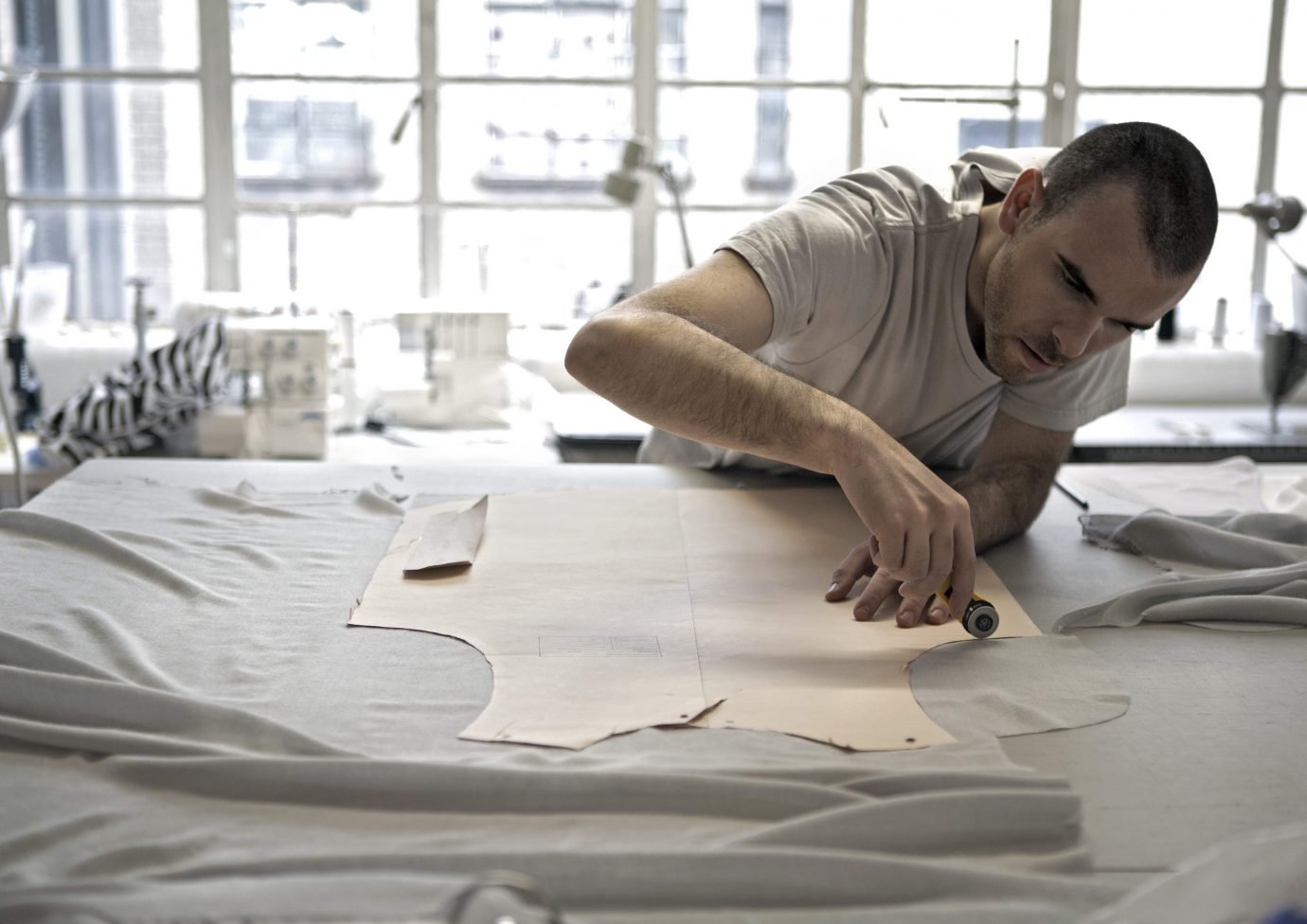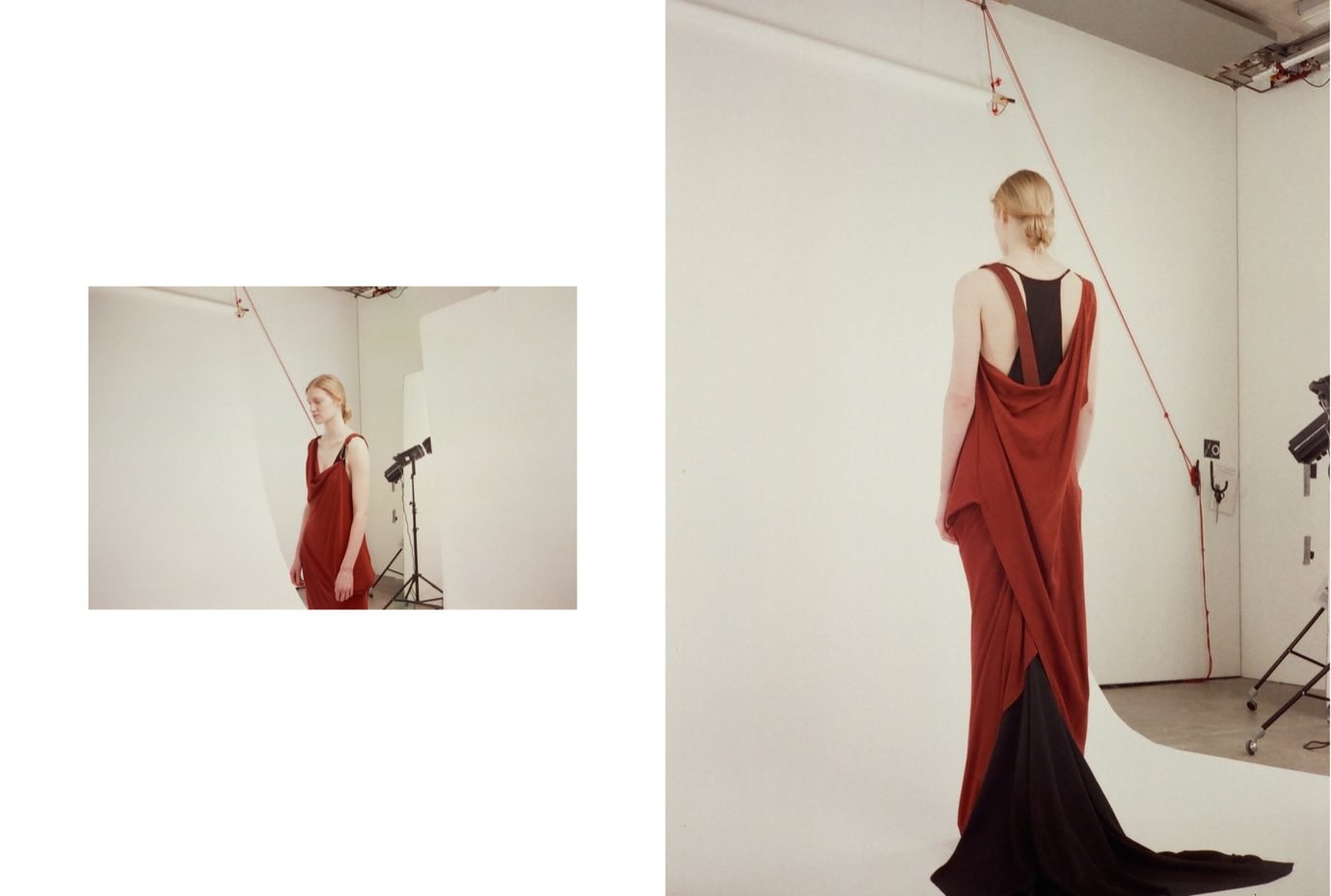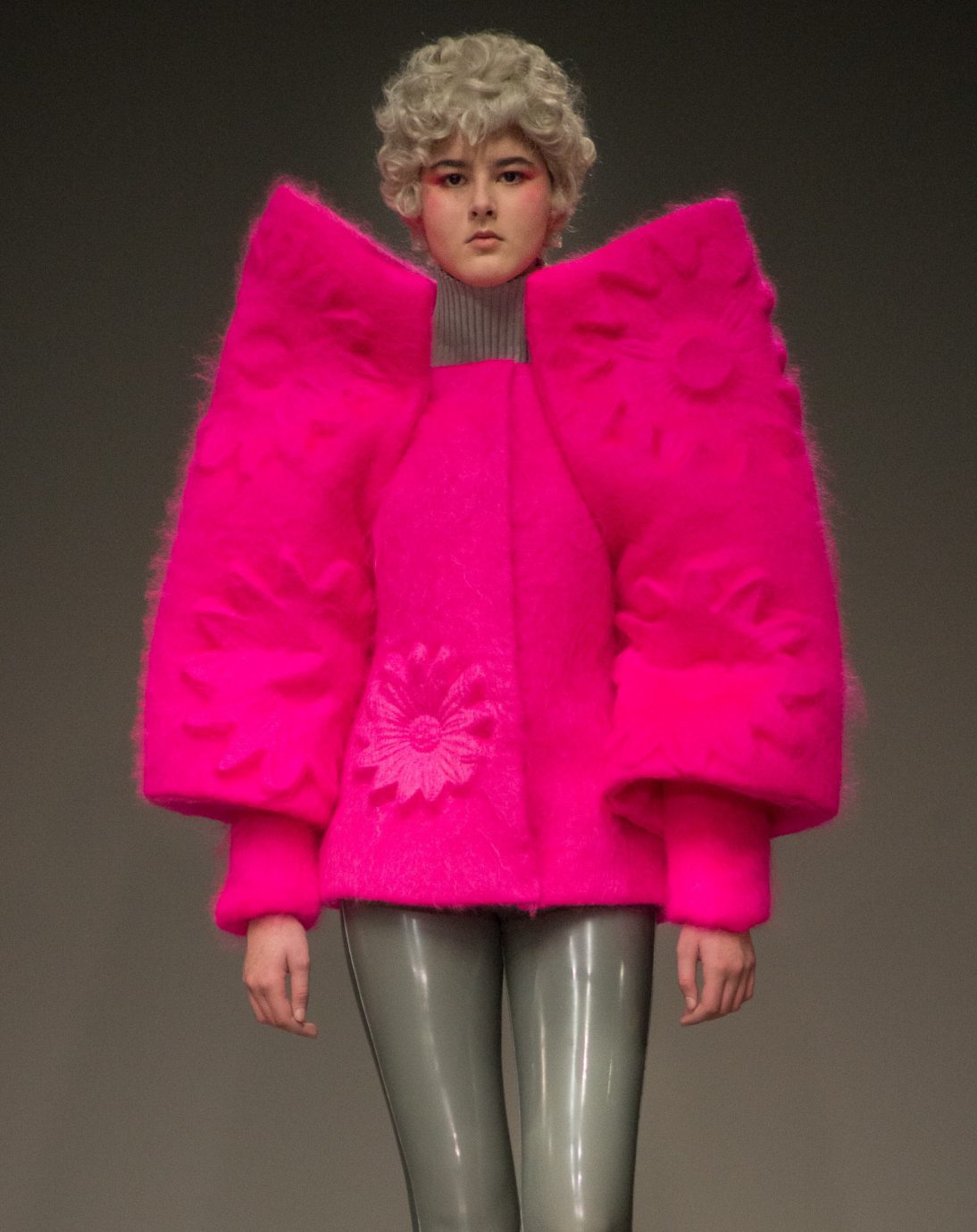The day here starts with the bell calling for breakfast, instead of beginning with the rushed ritual of transport and coffee to go, so often the standard in London. Eden’s studio, packed with her drawings, old encyclopaedias and small ceramic objects, has its door facing the central patio of the building; an open space with a lustrous orange tree in the middle. Edén spent the first week of our stay here drawing the same pine cone from hundreds of different perspectives. Then, she projected the images in the garden during the night. She taught us how to look to unfamiliar things until they become a vehicle for pleasure: familiar and fascinating at the same time.
Edén Barrena, the politics of pleasure in art
A year ago, Edén Barrena was studying the Printmaking MA at the Royal College of Art. Today, her landscape has changed in a quite surprising manner. She lives in Córdoba, South Spain, in an antique convent which has been converted into an artists’ residency by the writer Antonio Gala, a fetish figure in the Spanish cultural scene. Fundación Antonio Gala offers each year accommodation and maintenance to an interdisciplinary group of artists, with the aim of supporting them while they develop their personal projects. Edén and I meet this course in the Fundación by chance, both searching for a retreat where to restore the energy invested in academic life in London. From ceramics to drawing, Edén is now intensely dedicated to work on what motivates her most.
Your work always makes me reflect on the theory proposed by psychologist Robert Zajonc , which is called ‘the mere-exposure effect’. He suggested that affective reactions are created through exposure, or, in this case, through familiarisation with an image. I see this process as opposite to the “othering”, or abjecting difference, which can be said is fuelled by feelings of fear and avoidance. I would like to know how you relate these ideas to your creative process.
The relationship with the “other” I am interested in, is more linked with the consideration of the unfamiliar as a departure point to self awareness. Susan Hiller, in the prologue of her book The myth of primitivism, summarizes pretty accurately the idea I wish to research within my work, by saying that the individual, and for extension its society, gets defined when there is a juxtaposition against the “other”; the “other” is used, then, as a reference to analyze our own identity.
“MY STRATEGY IS TO DRAW THE SAME THING MANY TIMES IN ORDER TO KNOW IT WELL. I KEEP THE SPEED IN ORDER TO PRESERVE CERTAIN MYSTERY TOO: THE FASCINATION THE IMAGE PROVOKES ME NEVER GETS TO DISAPPEAR COMPLETELY.”
The way in which you work with an unfamiliar object or image training your ways of seeing it is of great interest to me. Taking, for instance, ‘Lomé’ as an example: Can you talk about the process of familiarisation with this particular image?
My artistic practise is the tool I have to process content I feel captivated by. I translate “raw” material into my own language in an attempt to analyse and understand what I see. Found imagery is always the physical material I depart from when drawing or making prints. At the beginning, the image I work from is a remote reference, the representation of a scenario or a character I wish to unravel by drawing it. My tendency is to work fast, moved by a great urgency, but that immediacy impedes a deeper comprehension of the image. I don’t want to renounce the freshness that drive leads to, so my strategy is to draw the same thing many times in order to know it well. I keep the speed in order to preserve certain mystery too: the fascination the image provokes me never gets to disappear completely. The result is a collection of different responses to the same stimulus.
Your treatment of a human figure seems to me identical to the one you give to other non-human forms ― let’s say the bull or the pine cone. Do you think it’s possible to represent the human figure as form and matter, and not embedded in a narrative?
I don’t see those aspects as opposite choices. Drawing is a language like writing or talking, but instead of words, you use graphic elements. At the end you have an image built by codes, and this image describes a situation as any other ways of fiction do. For me, drawing a bull or a human figure needs an identical procedure, since I take them as ingredients I create an image with: sometimes, a human figure is the main ingredient, and in other occasions it is a building, for example, but at the end what I am always doing is cooking a dish (making an image). I think there is always a narrative within an image if the person who reads it can see a story or an event going on behind it. The narrative potential of a work doesn’t depend so much on who made it, but on who looks at it.
“THERE EXISTS A DANGER OF PROMOTING PROJECTS THAT DON’T HAVE AN ACTUAL LIFE IN THE OUTSIDE WORLD, SINCE THE DYNAMIC IN MOST OF THE RESIDENCIES IS TO BUILD UP A BUBBLE, UNDER THE BELIEF THAT ISOLATION IS THE RIGHT ATMOSPHERE FOR CREATION.”
After finishing your MA, you decided to move to Cordoba to spend a year as artist in residence in the Antonio Gala Fundación, where we now live together. In your opinion, what is the socio‒cultural role that artist residencies play today? Tell me about your particular experience.
Artist residencies function as incubators for projects that can turn out profitable in the future, not only for the artist but for a potential audience. However, there exists a danger of promoting projects that don’t have an actual life in the outside world, since the dynamic in most of the residencies is to build up a bubble, under the belief that isolation is the right atmosphere for creation – which I couldn’t be more disagreed with. In my opinion, residencies should foster a continuous collaboration between residents and the environment in which the residency exists. For this reason, I am very interested in this growing movement of setting up residencies in rural areas: they do cover the gap between art and public, and art gets activated as another social aspect of the community.
Do you feel comfortable with the idea of ‘being an artist’ framed in terms of identity? Are you on the side of a post-secular approach? ―and with that I mean something like the movement towards the plurality of definitions, the demystification of the artist and the empowerment of the public.
I do feel comfortable considering myself an artist, since it is my current occupation and what I have studied for. However, I do confess I don’t feel that comfortable when I have to explain to someone else what I do, because I can anticipate their estrangement. There are still all these mystical and ridiculous associations with art, which I find very outdated. Being artist should be like being teacher, mechanic or greengrocer: an occupation, and nothing else. An artist is not someone gifted; it is someone who has been trained for that. Of course, some people do show more facilities, or develop certain sensibility, but even those skills can be learned. But the same can be said about any other job, though.
“IN MY OPINION, ART IS MADE FROM PLEASURE – OR THE ART I AM INTERESTED IN, AT LEAST – AND FINDING PLEASURE (NOT ONLY IN ART, BUT IN LIFE IN GENERAL) IS SOMETHING WE SHOULDN’T FEEL GUILTY ABOUT.”
How important is pleasure in the process of making? How does your final outcome contain or express this pleasure to the viewer?
At home, I have always been encouraged to pursue what I found pleasure in. My mother is a teacher at an elementary school, and since I was a kid, I have seen how she works. If I would have to choose an instant as representation of pleasure, I would definitely pick up one of the many images I keep of my mum at her school.
I am lucky enough to find that same pleasure when I spend time in a project I am very excited about, and I usually consider as my best works those I enjoyed a lot with while I was doing them, because, at the end, pleasure means motivation. When a work doesn’t provide me with this rapture, I lose the interest. I am aware of how whimsical it can sound, but if I would not find pleasure in my work, then I would try to do something less complicated to make a living from.
Stuck on your studio’s door, you have a quote that says: “So can we end with that― the politics of pleasure?” Is it possible to conceive a theory of art based on pleasure and playfulness and still be ethical?
Maybe, by decreasing that severe gaze put on artworks; that same gaze that believes art is some kind of social savior or vehicle for great truths. In my opinion, art is made from pleasure – or the art I am interested in, at least – and finding pleasure (not only in art, but in life in general) is something we shouldn’t feel guilty about.

